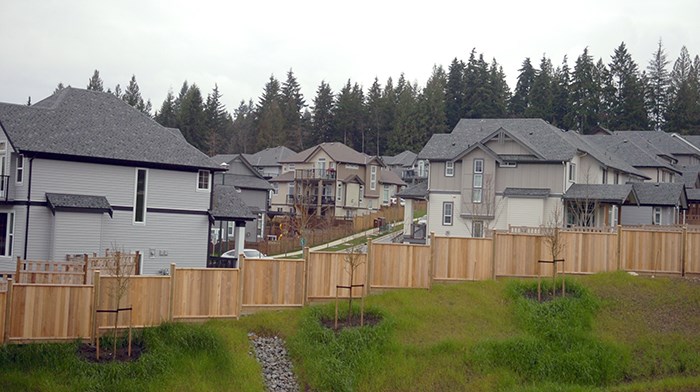More than 600 trees on Burke Mountain are considered hazardous and will need to be removed, according to the results of a tree risk assessment conducted by the city of Coquitlam and a consultant.
The majority of the trees are hemlocks, which tend to have a shallow root system, particularly when they are growing on slopes, making them more susceptible to blowing down in a windstorm, said a staff report.
“It is not often that something that is a life-and-death issue comes before us,” said Coun. Terry O’Neill, citing an incident last spring in Port Moody when a falling tree struck a home and killed a woman. “I believe this is a life-and-death issue.”
On Monday, Coquitlam council voted unanimously in favour of allocating $650,000 from its extreme weather fund to pay for the tree removal, debris management and re-planting in the affected areas.
Council also authorized the consultants to go on to private properties in the northeast sector to conduct the work. There are 188 residences with property in the Streamside Protection and Enhancement Area (SPEA — buffer zones created to protect streams) but the city has only received signed consent forms from 178 owners.
“The reality is, if there is a tree that is deemed hazardous that has a strike zone near a home, that tree is going to need to be dealt with,” said Raul Allueva, the city’s general manager of parks, recreation and culture.
He added that staff have been in communication with residents in the area and neighbours know about the work that is being conducted.
While council unanimously supported the recommendations, several expressed concern with the number of trees that required removal.
Coun. Chris Wilson said he was disappointed that initial assessments of the SPEA when the lands were turned over to the city a decade ago showed the stands were healthy and strong.
“It is so frustrating that we have such a problem when we are supposed to put all of our trust in the qualified professionals,” he said. “To get it wrong like this, it just makes me wonder what other problems we will have in the future.”
But Allueva defended staff and the environmental professionals that did the initial SPEA assessments. He said predicting how a stand is going to develop is difficult and that it was likely that when the areas were examined 10 years ago, the trees were stronger and more stable.
Bruce Blackwell, the principal with the consulting firm the city has tasked with assessing the tree stands, said one wind event can significantly alter an SPEA. He noted that some lessons have been learned that will be used as development moves forward on Burke Mountain.
So far, Blackwell has evaluated a third of the SPEA, finding that 218 trees that will need to be removed, while 81 others require some pruning or modifications. The consultant extrapolated its current numbers over the rest of the area to get to its finding that more than 600 trees will need to be removed and another 300 will require some modifications.
In June, prompted by a number of significant windstorms in the area, city staff initiated a tree assessment on Burke Mountain.
After council’s vote Monday, staff will now issue a tender for the removal of the trees and debris management work. The report noted that subject to weather-related delays, the job should be completed by the end of the year.
@gmckennaTC



